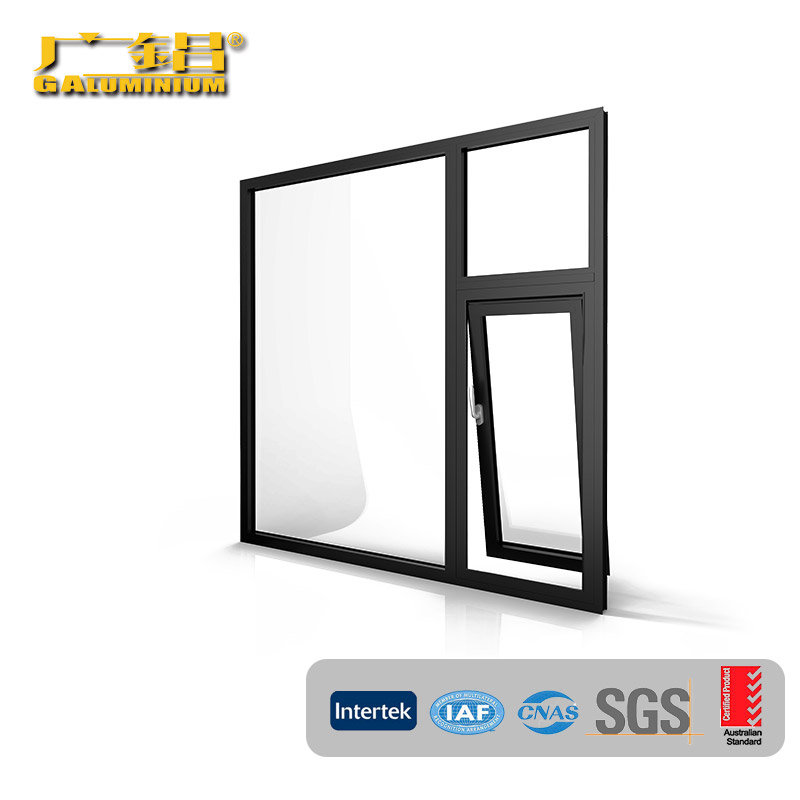Understanding the Thermal Insulation Properties of Gray Aluminum Outside-Hung Windows
2024-05-16
When it comes to energy efficiency in buildings, windows play a crucial role. They are not only essential for letting in natural light and providing ventilation but also for maintaining thermal comfort and reducing energy costs. Among the various window materials available, gray aluminum outside-hung windows have gained popularity for their sleek appearance and durability. But how do they measure up in terms of thermal insulation? Let’s delve into the thermal insulation properties of gray aluminum outside-hung windows and explore their impact on energy efficiency.
The Nature of Aluminum and Its Thermal Properties
Aluminum, by itself, is not a great insulator. It is a highly conductive material, meaning it can easily transfer heat. This characteristic is beneficial in some applications but poses a challenge for energy efficiency in windows. Without any modifications, aluminum windows would allow a significant amount of heat to pass through, leading to higher energy costs for heating in the winter and cooling in the summer.
Modern Solutions: Enhancing Thermal Insulation
To address the inherent conductivity of aluminum, modern gray aluminum windows are designed with several innovations aimed at improving their thermal insulation properties:
1. Thermal Breaks:
- Design: A thermal break involves creating a barrier within the aluminum frame that interrupts the flow of heat. This is typically achieved by incorporating a less conductive material, such as plastic or a composite, within the frame.
- Function: By breaking the path of heat transfer, thermal breaks significantly reduce the amount of heat that passes through the window frame, enhancing its insulating capabilities.
2. Double or Triple Glazing:
- Design: Glazing refers to the glass part of the window. Double glazing means two layers of glass with a space between them, while triple glazing has three layers.
- Function: The air or gas (such as argon or krypton) trapped between the glass layers acts as an insulator, reducing heat transfer. This design minimizes thermal loss and improves energy efficiency.
3. Low-E Coatings:
- Design: Low-emissivity (Low-E) coatings are thin, invisible layers applied to the glass surface.
- Function: These coatings reflect infrared heat back into the room during winter and block UV rays in the summer. This helps maintain a consistent indoor temperature and reduces energy consumption.
Benefits of Gray Aluminum Outside-Hung Windows with Enhanced Thermal Insulation
1. Energy Efficiency:
- With the integration of thermal breaks, double or triple glazing, and Low-E coatings, gray aluminum windows can achieve high levels of energy efficiency. This translates into lower heating and cooling costs for homeowners and a reduced carbon footprint.
2. Comfort:
- Improved thermal insulation means a more stable indoor temperature. Regardless of the weather outside, the interior of your home remains comfortable, eliminating cold drafts and overheated rooms.
3. Condensation Reduction:
- Better-insulated windows help reduce condensation buildup on the interior glass surfaces. This is particularly important in colder climates where condensation can lead to mold growth and damage to window frames and surrounding walls.
4. Durability and Low Maintenance:
- Aluminum frames are known for their strength and longevity. When combined with modern insulation technologies, they offer a durable and low-maintenance solution that doesn’t compromise on energy efficiency.
Conclusion
Gray aluminum outside-hung windows, once considered poor insulators, have evolved significantly with the advent of modern technologies. Through the use of thermal breaks, advanced glazing techniques, and Low-E coatings, these windows now offer competitive thermal insulation properties. They not only enhance the aesthetic appeal and durability of a building but also contribute to energy savings and improved indoor comfort.
When selecting windows for your home or building, it’s essential to consider not just the material but also the innovations that enhance their performance. Gray aluminum outside-hung windows exemplify how modern engineering can transform a naturally conductive material into an energy-efficient and stylish choice for any structure.



